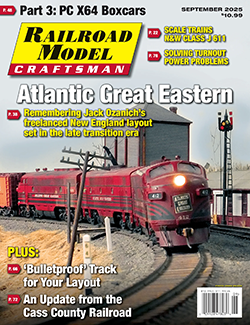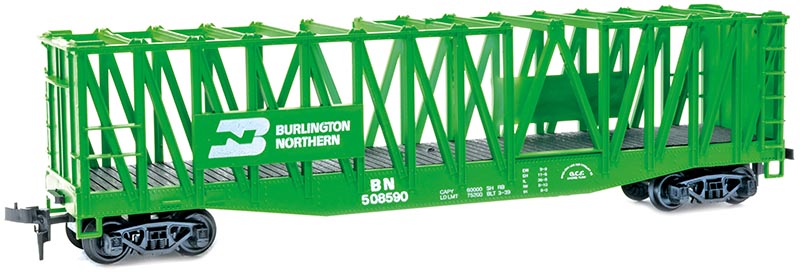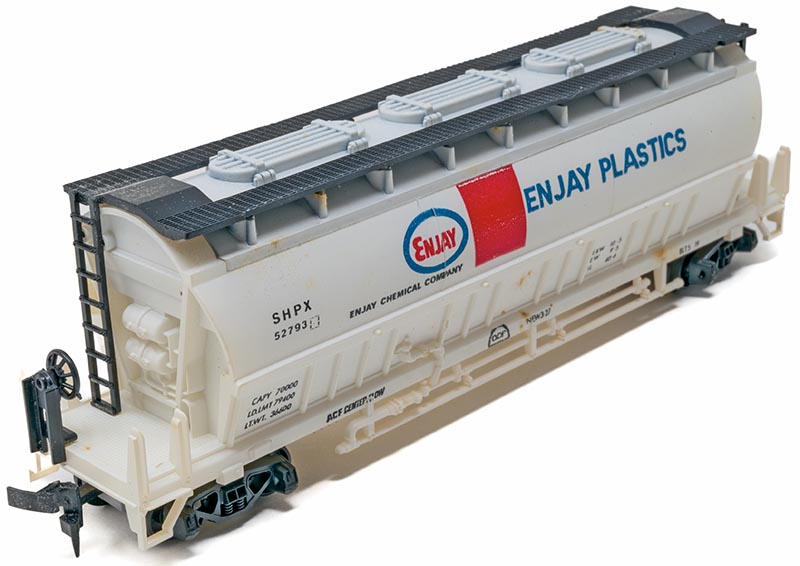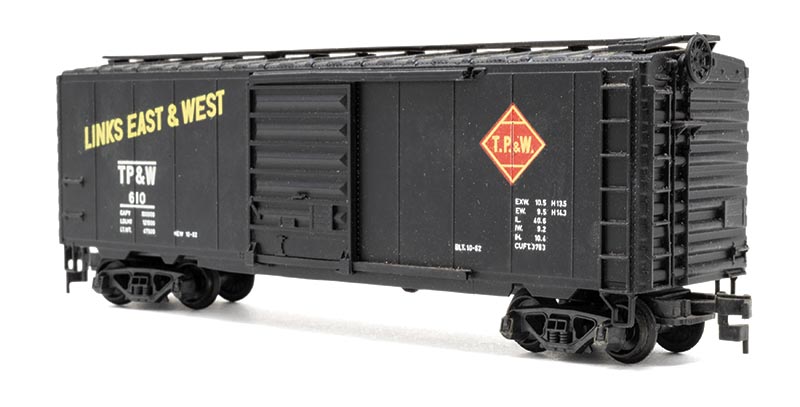 by Tony Cook/photos by the author
by Tony Cook/photos by the author
As I was working on material for the 2025 edition of HO Collector Annual, I was pleased to to see the shared excitement and special place Associated Hobby Manufacturers (AHM) holds among many in model railroading. An example was Ed Kaminski, author of Pullman-Standard Freight Cars (Signature Press, 2007). Ed noted how most AHM releases were prototypically accurate. but also brought you back to a time of your youth when model trains were still a magical thing.
The AHM line was always important to me. My father, Terry E. Cook, was a modeler with a keen eye on the prototype, and he would frequently bring home an AHM gem and begin the much more challenging pre-internet task of determining the accuracy of the plastic rendering, and in some cases just what the piece of rolling stock was used for by railroads. As many AHM enthusiasts can confirm, some of the selections included in the catalog run from uncommon to very obscure prototypes. In a time when mostly common examples, like the 40-foot boxcar, proliferated hobby catalogs, you found some intriguing pieces of rolling stock in those blue-and-yellow cardboard boxes.
Bernard Paul launched AHM in Philadelphia in the 1940s, selling balsa airplane kits out of his mother’s candy shop. He expanded into model railroading in the 1950s, becoming an importer for several brands, as well as developing his own products with overseas manufacturers such as Rivarossi. By 1982, AHM had declared bankruptcy and later reappeared as International Hobby Corporation (IHC), working with Mehano to produce many of its HO trains. Paul passed away in 2010.

ABOVE: According to my research, this freight car existed on Southern Pacific’s roster only and was a product of the road’s shops. AHM skipped Espee in its collection of road names, but included this red Western Maryland.
This year’s HOC Annual was several years in preparation for me. Not counting my lifelong collecting of HO trains, the focused effort of tracking down various AHM HO scale freight cars (and yes, I did acquire some of the company’s N and O releases) was a delight and became a serious pursuit in the last year. What are my favorite picks from AHM’s line? In no particular order, here’s what I find appealing and what I would recommend to a collector just starting down the AHM path.
PS-1 40’ Boxcar
After stating the line was intriguing thanks to its diversity and trend away from the mundane, I will offer AHM’s 40-foot PS-1 boxcar as a “must-have” model. Introduced in the early 1960s and produced by Roco in Austria, this replica of Pullman-Standard’s popular sliding door (versus the plug door variant also in AHM’s line) was an impressive model and held its own for many years. You’ll find examples vary in design with some production runs including ladders as separate features. Though a 40-foot boxcar may be common, AHM offered variety in its road names. Not content with the big hitters like Santa Fe or Chesapeake & Ohio, this offering can be found decorated for Alton & Southern, Buffalo Creek, Pittsburgh & West Virginia, and West India Fruit & Steamship Co. For me the Toledo, Peoria & Western car is a favorite.

ABOVE: If calcium carbide was a commodity you needed to move on your HO pike back in the day, AHM had you covered with two styles of this exotic freight car prototype. This Burlington Northern example was labeled as “Calcium Carbide Carrier” and is similar to a pulpwood car, which was another odd Roco tooling based on a Norfolk & Western prototype.
Calcium Carbide Container Carrier
The pair of calcium carbide container carriers are standouts in the line. While preparing my AHM roundup for the annual, I saw a post from a collector on a Facebook group, asking what that car was and what did it carry in reference to the “container carrier” car.
Roco was responsible for tooling up this pair of 50-foot freight cars. The HO models may suffer some understanding and appreciation due to a lack of load provided. The N-scale release of the calcium carbide container car, not part of AHM’s catalog but sold by Atlas for a time in its early days of 1:160 offerings, came with a container load that added to the visuals of the car and aided in seeing what it was used for by railroads.
Speaking of railroads, my research shows only Southern Pacific rostered the calcium carbide container car. Today, HO modelers can add accurate loads to both of these freight car model curiosities thanks to releases from Tully Models (steelmillmodelerssupply.com).

ABOVE: Once a somewhat sought-after AHM release, Rapido Trains has tempered the interest in this ACF Flexi-Flo hopper model. One of the many uncommon prototypes reproduced in Austria by Roco, this is a favorite of many collectors, myself included.
Flexi-Flo Hopper
An early 1970s addition to AHM’s catalog was American Car & Foundry’s Flexi-Flo hopper. This early pressure-differential hopper was a concept promoted and experimented with by New York Central in the mid-1960s. Today, this general approach to loading and unloading bulky materials from a covered hopper has more widespread utilization. My understanding is, these early Flexi-Flo hoppers required specialized equipment to enable loading/unloading and thus were trapped on New York Central rails and were not a common interchange freight car.
Sorry, the Glacier Green example decorated for Great Northern and the yellow Frisco are not prototype; and neither are the rest of the offerings including Cargill, Enjay Plastics, Gulf, and Shell. However, this is still a neat freight car, if somewhat non-North American maybe in its appearance to my eyes, but one to have in a starter collection of AHM. All the schemes are fun, but I might go with the white Enjay Plastics car as a favorite look for the Flexi-Flo hopper.
This release is much easier to obtain in recent years, thanks to Rapido Trains producing a finely detailed contemporary tooling example. That same manufacturer has announced a helium carrier, which might free up a good percentage of the demand for those vintage AHM models…



